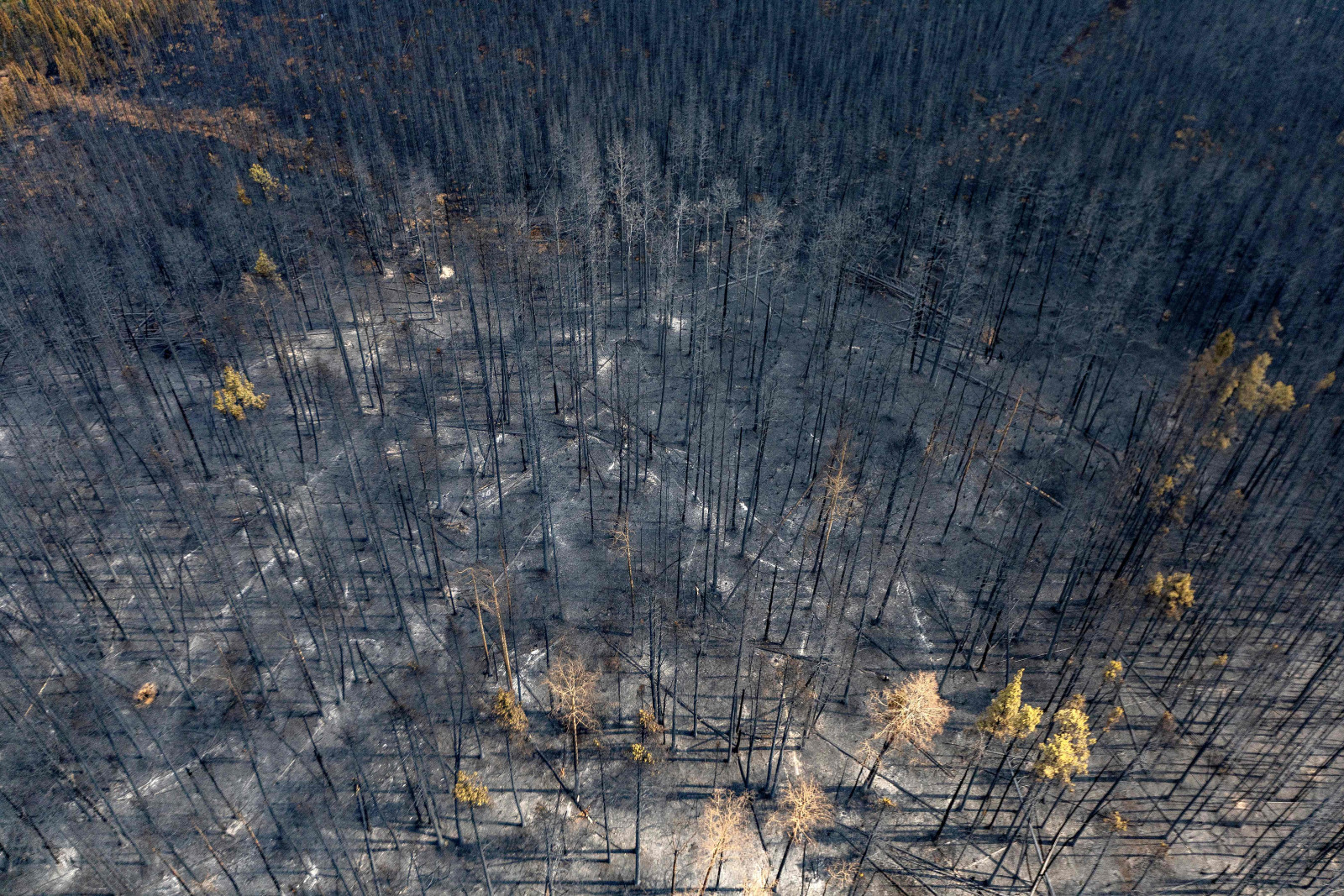
Study: A third of the West’s burned forests can be traced to fossil fuel companies
The American West has always had forest fires — just not like this. Blazes are spreading further and burning longer, incinerating towns and exposing millions of people to noxious smoke. While a century of fire suppression and other land management choices contribute to the severity, climate change is a key factor fueling these fires, roughly doubling the acreage burned over the last 40 years. A new study takes this connection one step further, making the case that a significant chunk of burned forests — nearly 20 million acres — can be traced back to major fossil fuel companies.
The study, published in the peer-reviewed journal Environmental Research Letters on Tuesday, is the first to quantify how corporate emissions have made wildfires worse. Experts say the new research could help advance growing efforts to take polluters to court.
“These companies should be held accountable for their fair share of the damages that they’ve caused,” said Carly Phillips, a coauthor of the new study and a research scientist at the Science Hub for Climate Litigation at the Union of Concerned Scientists. “They lied and engaged in this orchestrated campaign of deception for years, and it didn’t have to be this way, right?”
Researchers from the Union of Concerned Scientists and the University of California, Merced, found that 37 percent of forest burned across the western United States and southwestern Canada since 1986 can be linked to carbon pollution from 88 of the world’s largest oil, gas, and coal companies. That group includes Chevron, ExxonMobil, BP, and Shell; state-owned oil producers like Saudi Aramco and Gazprom; and cement manufacturers. Researchers considered emissions directly emitted by these companies’ operations as well as the indirect emissions from the products they sold.
Since 2017, cities and states have filed around 20 lawsuits against fossil fuel companies based on state laws that prohibit deceptive advertising, seeking money to adapt to the effects of climate change. The suits were set in motion by investigations showing that Exxon, Shell, and coal companies had known about the dangers of skyrocketing carbon emissions for decades, but publicly downplayed the threat. After years of delays, the Supreme Court declined to get involved in these cases last month, clearing the way for them to proceed — potentially to jury trials.
The study comes as spring fires scorch western Canada during an unusually hot and dry spring, with about 1 million acres burning across the province of Alberta. An early heat wave pushed temperatures above 90 degrees in parts of the typically temperate Pacific Northwest over the weekend, with Seattle and Portland breaking heat records at least three days in a row. The same heat dome is expected to fan the flames of nearly 90 fires burning across Alberta.
It’s hard to draw a direct line between global warming and wildfires. But recent advances in “attribution science,” the field that identifies climate change’s role in heat waves, droughts, rising seas, and other phenomena, have made it possible to quantify its effect on fires. The new study relies on a key risk factor called the “vapor pressure deficit,” a measure of how “thirsty” the atmosphere is. Hotter temperatures cause moisture to be pulled out of vegetation, turning forests into tinderboxes just waiting for a spark.

To figure out how companies’ emissions contributed to fire-danger conditions in the West, researchers built on a previous study that linked emissions from 88 big fossil fuel producers to rising temperatures. Then they compared two models of how dry forests would be under different climate scenarios — one modeled on the real world, and the other excluding the emissions associated with the 88 companies.
“The major contribution of this study is to connect all of the dots between specific sources of human-related carbon emissions and recent increases in forest fire activity,” said Philip Higuera, a professor of fire ecology at the University of Montana who was not involved in the study. “Most of the links have been well known for a long time, but this is the first study to connect the dots, quantitatively.”
Exxon and BP did not respond to Grist’s request to comment in time for publication.
Jessica Wentz, a fellow at Columbia University’s Sabin Center for Climate Change Law, thought the findings could be used to support existing lawsuits, or provide the impetus for other local governments to file their own. Wentz said the research might be relevant to a case in Colorado, where the city and county of Boulder, along with San Miguel County, sued Suncor Energy and ExxonMobil, seeking millions of dollars to update their infrastructure to withstand climate change. “That’s the one lawsuit where wildfire-related damages are forefront and central,” Wentz said.
Translating the research to a specific court case could prove thorny, though. The study looked at a large region, the whole North American West, and the aggregate of 88 companies’ emissions. It’s possible that attorneys could use the new research to calculate wildfire risk over a smaller area — say, Boulder County — but it would require some extrapolation. For calculating damages, a court might want to see a more fine-grained analysis, Wentz said. “It’s really a totally open question of how courts will look at the evidence, and just how granular will plaintiffs need to be in terms of providing scientific data to support their claims. We just don’t know yet.”
In a way, the long delays in these climate court cases have actually given some ammunition to cities and states looking to hold fossil fuel companies accountable. The extra time has allowed the science of climate attribution to mature, so that if these cases end up going to trials, cities and states have more evidence to support their case. “It’s sort of a weird silver lining,” Wentz said.
This article originally appeared in Grist at https://grist.org/accountability/study-a-third-of-the-wests-burned-forests-can-be-traced-to-fossil-fuel-companies/.
Grist is a nonprofit, independent media organization dedicated to telling stories of climate solutions and a just future. Learn more at Grist.org
